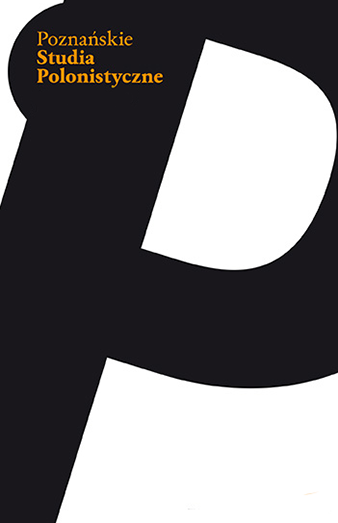Astrologiczne i humoralne uwarunkowania wyglądu ciała ludzkiego. Johannesa ab Indagine Introductiones apotelesmaticae in Chyromantiam, Physiognomiam, Astrologiam Naturalem complexiones hominum naturas planetarum (1522) na tle kultury umysłowej renesa
Human body in the astrological and humoral context. Johannes ab Indagine Introductiones apotelesmaticae in Chyromantiam, Physiognomiam, Astrologiam Naturalem complexiones hominum naturas planetarum (1522) in the light of intellectual culture of the R
Author(s): Agnieszka RauboSubject(s): Studies of Literature, Health and medicine and law, 15th Century, 16th Century
Published by: Wydawnictwo Poznańskie Studia Polonistyczne
Keywords: Renaissance; physiognomy; astrology; chiromancy;
Summary/Abstract: This article describes the impact of humoral theory and astrology on the description of human body in four types of temperaments (choleric, phlegmatic, sanguine and melancholic) in the Renaissance writings. The most important of them is an antique book entitled Introductiones apotelesmaticae in Chyromantiam, Physiognomiam, Astrologiam Naturalem complexiones hominum naturas planetarum written by Johannes Indagine and printed in 1522. Other books from this period are: Enchiridion Physiognomiae co[m] pe[n]diosu[m]: cu[m] figuris facieru[m] (1532) by Simonenide Louicz, Problemata Aristotelis. Gadki… o składności członków człowieczych (1535) by Andrzej Glaber, Phisionomia hinc inde ex illustribus scriptoribus… recollecta (1518) by Johann von Glogau. The article describes the humoral theory of diseses, which roots were created by Hippocrates and Galen, and the doctrine of the four humors dominated Medieval and Renaissance medicine. This theory held that in the body there are four humors or bodily fluids (moists) held the secret to temperaments. These humors were: blood, yellow bile, black bile and phlegm. A proper domination of each fluid was a cause of characteristic patterns of appropriate temperament: melancholic, sanguine, choleric and phlegmatic. The theory of four temperaments was also intrinsically tied to astrology, beginning with a natal birth chart interpretations to the impact of different planets (Zodiac) on the organs in human body. Astrology was also helpful in the interpretation of temperaments (personality types) with their connection to the picture of human face, which was analyzed by the medieval physiognomy and also to physical appearance: shape of the body, colour of the skin, musculature and hair. The article also describes the correlations connecting the theory of four humors with birth (natal) charts and looking which planet has the impact on each temperament and human body, with negative or positive domination of diffrent character qualities. And finally, there is a detailed reconstruction of physiognomic types of human types of four temperaments, based on the book from 1522 Introductiones apotelesmaticae in Chyromantiam, Physiognomiam, Astrologiam Naturalem complexiones hominum naturas planetarum by Indagine. The author discusses a planet’s positions and conjunctions with other planets in horoscope and their impact on temperament, physical posture, character traits, with some medical comments.
Journal: Poznańskie Studia Polonistyczne. Seria Literacka
- Issue Year: 2017
- Issue No: 31
- Page Range: 89-128
- Page Count: 40
- Language: Polish

